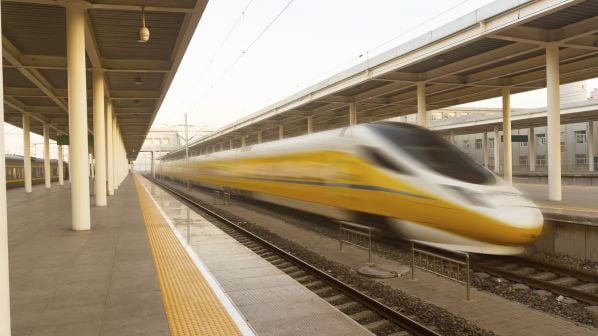THE Swedish government’s decision to shelve the country’s high-speed rail project in December ended, at least for now, a near decade-long debate over the scheme.
Sweden was split over whether constructing a new 320km/h Y-shaped network between Stockholm, Gothenburg and Malmö was a good idea. On announcing the project in 2014, the government of the time said it would create jobs and improve transport connections in the north of the country. Swedish national operator SJ also went on a media charm offensive, talking up shorter journey times and improved connectivity, the boost to Sweden’s global competitiveness, and the project’s benefit to the environment.
However, concerns centred on the SKr 295bn ($US 28.23bn) cost of the project, which had been watered down in 2021 from the original proposal. Justifying its decision to cancel the project, the government says that it favours upgrading existing rail infrastructure, where it says “maintenance has been lagging for many years,” and that it would invest in improving roads and installing e-charging points for cars.
It is of course easy for a rail industry publication to slam this decision. The industry after all has a vested interest in the construction of these mega projects. Yet it does seem rather short-sighted, particularly on environmental grounds. It is also contrary to the wider global trend of more and more governments backing high-speed rail construction.
Britain’s HS2 project to build a new high-speed line between London, Birmingham and Manchester has been equally controversial and divisive, mirroring the debate in Sweden. The government remains committed to the project. Yet the failure to adequately communicate its benefits of improved network capacity in the early stages has left HS2 on the back foot. Even now the government struggles to grasp and communicate the concept of modal shift. The project is also not helped by its ludicrously high cost.
Even in a time of fiscal constraints, the climate emergency justifies greater spending on infrastructure.
Opponents have argued that this money would be better spent on upgrading the existing network. And they have a point. However, it should not be an either or. Even in a time of fiscal constraints, the climate emergency justifies greater spending on infrastructure that will bring down emissions from transport, which remain stubbornly static. Supporters also point out that mixing up long-term infrastructure investment with everyday maintenance and renewals is a folly, arguing that these costs are spread over many years and will in the long term offer a return on investment that far outweighs the upfront cost. This did not stop the British government from making this argument to justify scrapping the eastern leg of HS2 to Leeds in 2021, however.
Elsewhere in Europe, Spain continues to double-down on high-speed rail investment while the French are once again entertaining the idea of new line construction. New projects are taking shape in the Czech Republic and in Poland, where Solidarity Transport Hub (CPK) is overseeing the continent’s most ambitious project. It plans to build a 2000km network of 12 high-speed lines centred on a new airport being built between Warsaw and Lodz. It is hoped that this project will connect with the Rail Baltica programme to connect Estonia, Latvia and Lithuania to the standard-gauge network, construction of which is underway, as well as a proposed line to Ukraine.
These projects are all included in a report compiled by the Community of European Railways and Infrastructure Companies (CER), AllRail and Europe’s Rail, which offers a blueprint for a 49,400km European high-speed network that will help to increase high-speed rail’s market share to 54% by 2070.
The authors’ argument centres on the environmental benefits of shifting people and goods onto rail. This is reinforced by the early results of a German plan to convert aviation passengers to rail post-Covid-19. Passengers using DB’s ICE Sprinter service increased by 45% in 2022 compared with 2019, while domestic aviation remains at 56% of pre-pandemic levels.
Delivery of the projects will ultimately be down to member states. However, the study’s authors are calling for the development of a High-Speed Masterplan for Europe that will guide member states when building new infrastructure. There is also a desire for countries to align their national infrastructure planning so new high-speed rail construction does not stop at the border, as Europe’s Rail’s outgoing executive director, Mr Carlo Borghini, points out.
Elsewhere, high-speed rail is increasingly becoming the backbone of transport infrastructure planning in both developed and developing countries. China’s commitment continues unabated, with the national network set to reach 44,500km this year. China will also complete a project to build Indonesia’s first high-speed line between Jakarta and Bandung in June. This is its most high-profile international project to date and it surely hopes to complete more as part of the Belt and Road Initiative. Building on the project to Laos to other countries in southeast Asia is an obvious target.
Japan missed out on the Indonesian project but is helping India to build its first high-speed line between Mumbai and Ahmadabad, although this has run into some difficulties. Construction of several projects is underway in Turkey, where a 30-year transport plan targets the construction of a 28,590km of lines by 2053. Saudi Arabia also hopes to extend its Mecca - Medina high-speed line to Riyadh.
One of the most exciting current projects is in Egypt, where work is underway on a new 2000km network. This will draw a lot of interest among visitors to Marrakech for this month’s UIC World Congress on High-Speed Rail. Delegates will also have the opportunity to see first-hand Morocco’s Rabat - Casablanca high-speed line and hear about the planned extension to Marrakech.
“I don’t know any country that started building a high-speed railway and then didn’t continue,” Mr Pär Helgesson, then high-speed project manager at SJ, said back in 2017. This statement has never felt truer. While parked for now, the debate over whether to build high-speed rail in Sweden is not quite finished yet.

